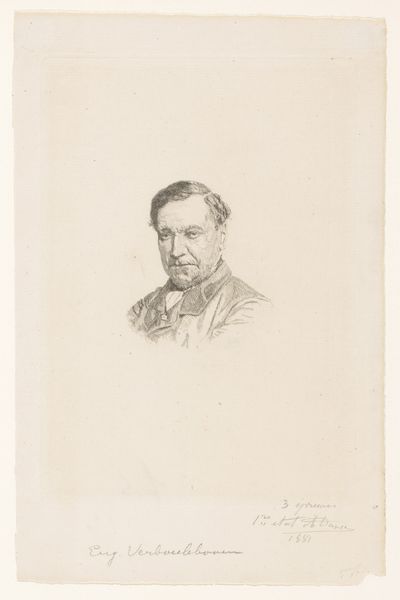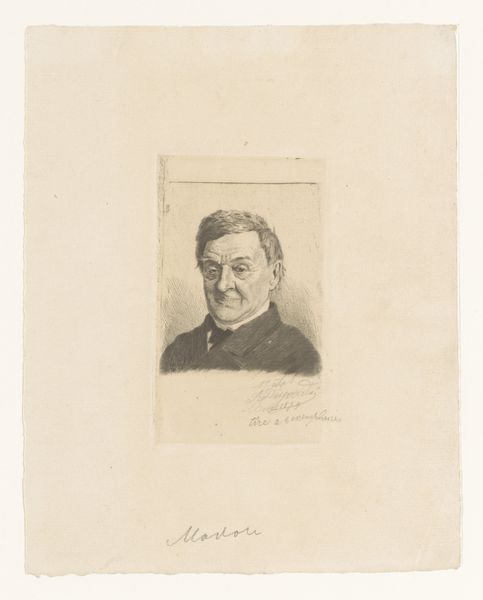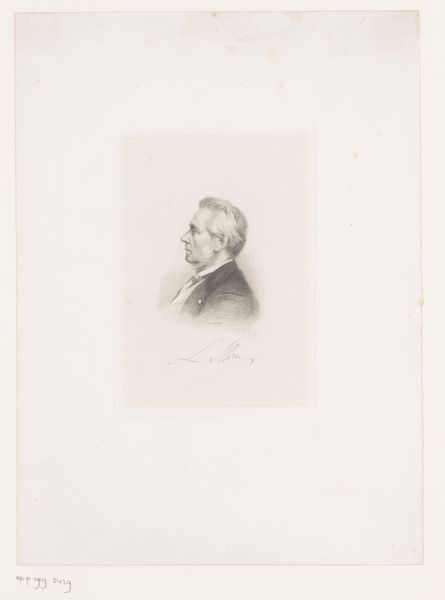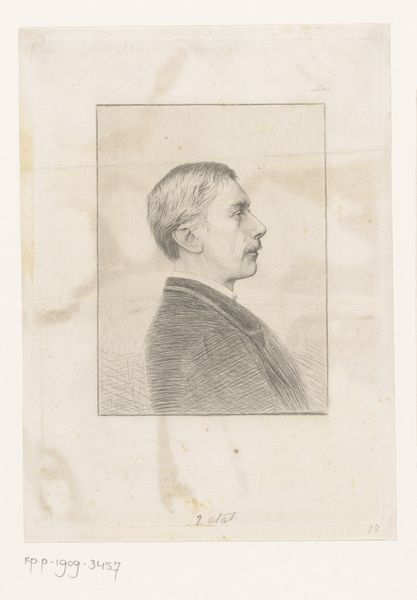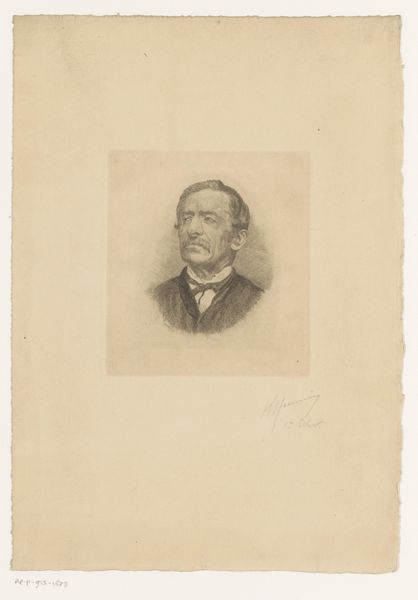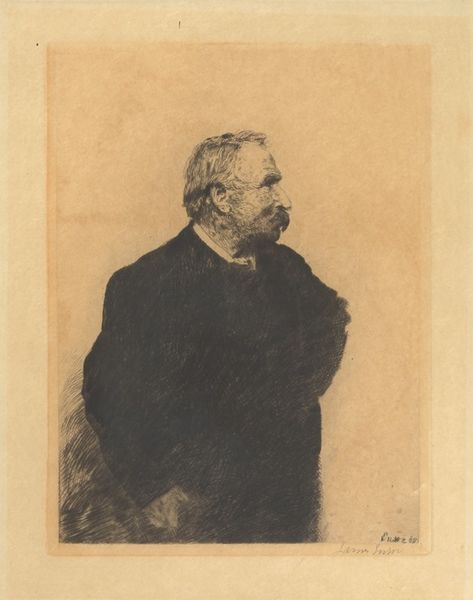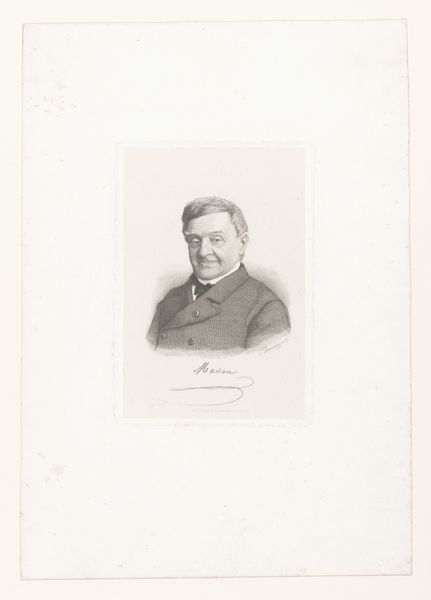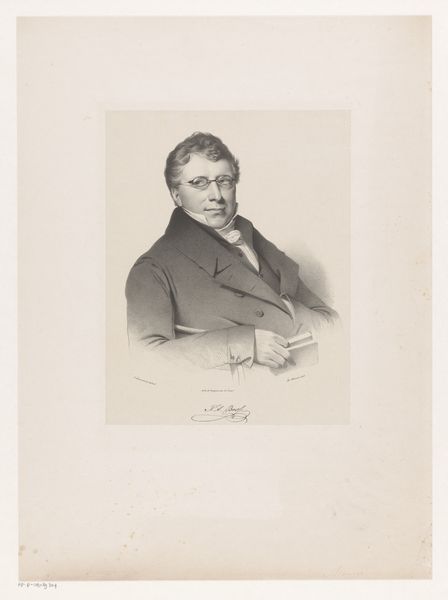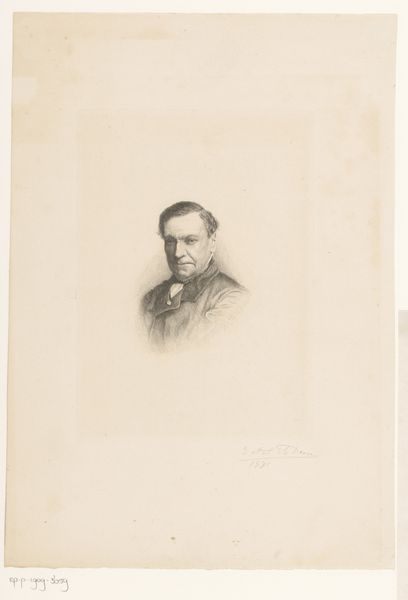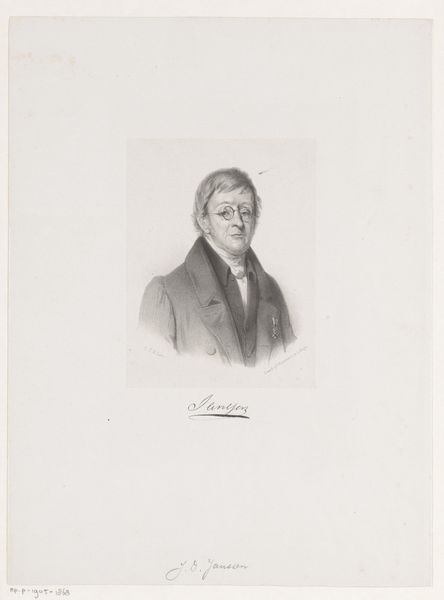
drawing, pencil
#
portrait
#
drawing
#
pencil
#
portrait drawing
#
academic-art
#
realism
Copyright: Public Domain
Editor: This is "Bildnis Johann Jeremias Hoff, Vater des Künstlers", a portrait drawing made with pencil by Johann Jakob Hoff in 1856. I'm struck by the delicacy of the lines and how much they convey despite being so simple. How would you interpret this work? Curator: The portrait, rendered with such painstaking detail in humble pencil, presents a fascinating case study in the material conditions of art production in the mid-19th century. Consider the economics at play: pencil, a relatively inexpensive and accessible medium, was becoming increasingly industrialized. Was Hoff making a statement through this choice, perhaps challenging the dominance of oil painting as the "high art" medium? Editor: That's an interesting thought. I hadn't considered the economics. Was there a growing middle class who might have had more access to these materials? Curator: Precisely. The rise of industrial capitalism provided artists like Hoff greater access to prepared drawing materials, and potentially more consumers to make art for. Note the detail afforded by a pencil's precise point; what does this accessibility suggest about art's evolving role in society and the shifts in artistic labour at the time? Editor: So the choice of pencil might reflect broader social and economic changes in artistic labor? Curator: Indeed. It begs us to question the presumed hierarchy of art forms, considering the socio-economic context surrounding artistic practice. Editor: That's really made me look at the artwork differently, by considering the material and production processes. Thanks for opening my eyes to this approach! Curator: And you’ve helped me to remember the quiet beauty inherent in even the simplest of tools.
Comments
No comments
Be the first to comment and join the conversation on the ultimate creative platform.
